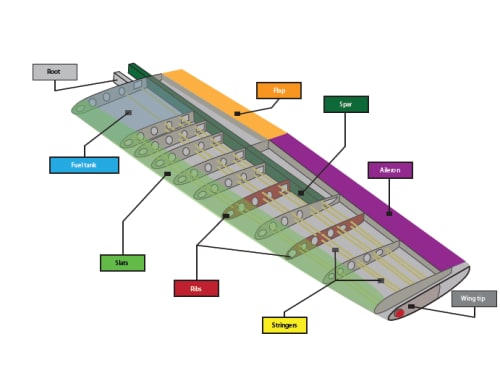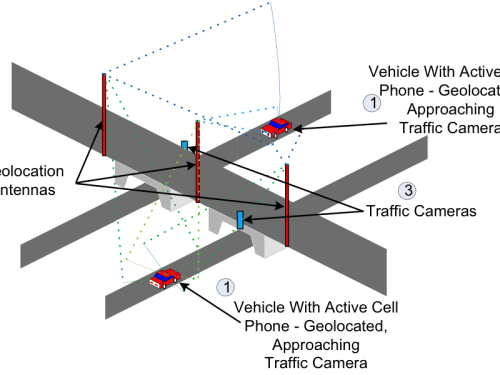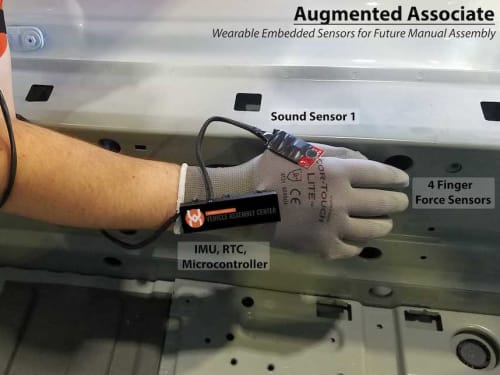Congratulations to Our 2025 Grand Prize and First Place Winners!
Imersiv, a breakthrough technology that improves audio performance by 100X compared to today’s very best audio equipment for applications ranging from sound engineering to space missions to medical imaging, was named the $25,000 grand prize winner at a live finalist round held November 7 in New York. Click here for the full list of winners. Also see the Top 100 highest scoring entries. Special thanks to our esteemed panel of judges.
Help build a better tomorrow
Since Tech Briefs magazine launched the Create the Future Design contest in 2002 to recognize and reward engineering innovation, over 16,000 design ideas have been submitted by engineers, students, and entrepreneurs in more than 100 countries. Join the innovators who dared to dream big by entering your ideas in our 2026 contest opening March 1.
Read About All the 2024 Winning Inventions

Special Report spotlights the eight amazing winners in 2024 as well as honorable mentions in each category, plus the top ten most popular entries as voted by our community.
Click here to read moreA ‘Create the Future’ Winner Featured on ‘Here’s an Idea’
Spinal cord injury affects 17,000 Americans and 700,000 people worldwide each year. A research team at NeuroPair, Inc. won the Grand Prize in the 2023 Create the Future Design Contest for a revolutionary approach to spinal cord repair. In this Here’s an Idea podcast episode, Dr. Johannes Dapprich, NeuroPair’s CEO and founder, discusses their groundbreaking approach that addresses a critical need in the medical field, offering a fast and minimally invasive solution to a long-standing problem.
Listen nowThank you from our Sponsors
“At COMSOL, we are very excited to recognize innovators and their important work this year. We are grateful for the opportunity to support the Create the Future Design Contest, which is an excellent platform for designers to showcase their ideas and products in front of a worldwide audience. Best of luck to all participants!”
— Bernt Nilsson, Senior Vice President of Marketing, COMSOL, Inc.
“From our beginnings, Mouser has supported engineers, innovators and students. We are proud of our longstanding support for the Create the Future Design Contest and the many innovations it has inspired.”
— Kevin Hess, Senior Vice President of Marketing, Mouser Electronics
contest
Contest
This is a new design that takes advantage and merges two very well-known designs.
Airfoil wings make lift by changing the direction and pressure of the air that crashes into them as they move through the sky. The spinning cylinder wing design, using the magnus effect, has many advantages over traditional airfoils but also some disadvantages.
Smart gardening and farming using sustainable, cost-effective and reusable techniques require smart planning and implementation of resources and focus on effective utilization, extensibility and adaptability of agricultural inputs. The steps involved include:
1. Nearness of farming/gardening location with kitchen and water supply unit.
This is an alternative fuel technology to generate power using hydrogen fuel (HHO gas) that is derived from water by electrolysis. Hydrogen is the clean fuel of the future. It is the most abundant element in the universe that also contains more energy than most hydrocarbon fuels and is generated from water, which too,
This new back-up camera system for automotive vehicles has the purpose of eliminating black spots or areas where a standard back-off camera cannot identify a vehicle circulating and thus avoid accidents. This camera is installed on both left and right rear ends (break light).
Origami Steel is a patented, transformational, highly cost efficient structural steel fabrication technology that replaces hot rolled structural steel commodity products and profiles with hot rolled steel coil or plate that can be formed into virtually any shape.
Origami Steel has developed, tested,
The main uses for this design would in the automotive industry, however,
The STEHO SYSTEM - the result of long term research - works in the field of reduction of operational loses of the input power supply (power grid), and significantly reduces electricity payments (up to 50%).
The system works with the magnetic property laid by in the steel of three independent transformers acting as reactors,
CO2 emissions are a problem that cannot be ignored. Despite worldwide attempts at legislation and organization, experts predict that emissions will continue to climb 2% per year going forward. Coal and other hydrocarbon plants that generate power are some of the largest contributors of atmospheric CO2. State-sponsored resolutions to decrease CO2 emissions have proved costly.
Page 340 of 1029



















